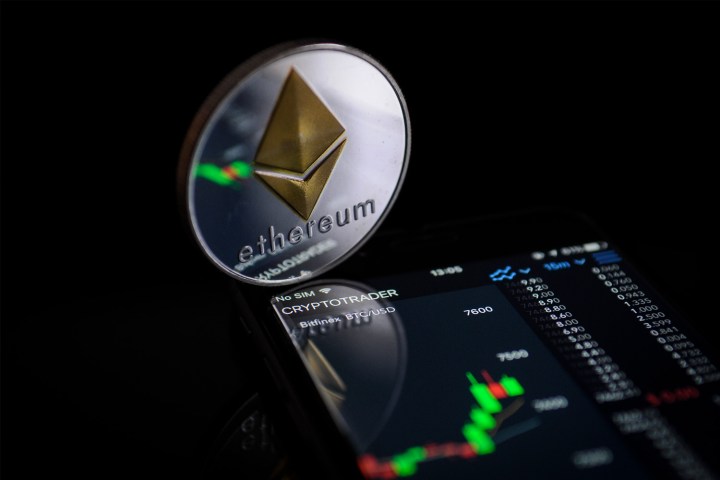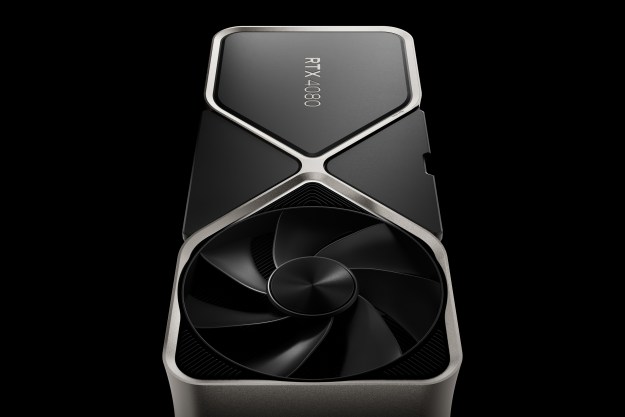
Proposed as a potential successor to bitcoin in 2014, Ethereum and its cryptocurrency token, Ether, offer some interesting features which could make the platform a better transactional medium than some of its contemporaries. Smart contracts make fraud and censorship even less likely than with other cryptocurrencies and the Ethereum blockchain is great for crowdsourced funding that doesn’t require a third-party middle-man like Kickstarter or IndieGoGo.
But whether you want to dig into the technicalities of what Ethereum and Ether are, or whether you just want to buy some to make some money out of it, in this guide we’ll walk you through the best ways to do so, so you can get together your own collection of “ETH” in no time at all.
Buying on an exchange

Arguably the simplest way to buy your first Ether is through an exchange platform. They do all the hard work of checking prices and making the actual transaction for you. Although Ether differs from bitcoin and other cryptocurrencies in a few ways, using an exchange makes the practice of buying it no different.
But which exchange should you choose? There are tens of popular exchange platforms and each of them is a little different from one another. The simplest suggestion is to pick an established and insured exchange with full support for Ether trading like Coinbase, Kraken or BitStamp, but you can always use Bitcoin.com’s exchange page to sift through some of the alternatives to pick one that best suits you.
Once you’ve picked an exchange, you’ll want to sign up to it. That usually involves verifying your identity, so make sure you have some valid form of I.D. handy. In the cases of some, you’ll be able to twin your bank account or debit/credit card with the site to make purchases, but some will require you to transfer funds directly to a fiat currency (U.S.D etc.) account on the site first.
With your real-world money ready to go, it’s time to actually make a purchase. Some sites will offer you more options than others, but for most, you’ll input an amount of Ether you want to buy (or an equivalent amount of fiat currency you’re willing to spend) and click the “Buy” button.
If everything goes to plan, your investment funds will be deducted from your account or relevant wallet and your Ether will be transferred into its respective wallet. Although Ether is less susceptible to market congestion than bitcoin, trades aren’t always instantaneous, so if your cryptocurrency doesn’t show up immediately give it some time before starting to worry.
Once it does show up, you can hold on to it for selling later, trade it for another cryptocurrency, or even use it for various online transactions.
For those more comfortable using their smartphone to conduct financial transactions, there are various smartphone apps for some of the big exchanges, and they can be even more of a smooth experience. Take the same steps as described above but with taps rather than clicks, and you’ll have a stack of readily accessible Ether at your fingertips.
If you plan to hold your Ether for an extended period of time, or purchased a lot, you may want to take the extra security step to transfer for your Ether to an account that’s not linked with an exchange. There have been instances of exchanges being hacked or going down during times of extreme trading, so keeping your cryptocurrency in a more secure wallet — possibly even in “cold storage” — is a good practice for serious traders.
Buying through direct trade

If all of this exchange trading is a little too hands-off for you and you’d rather have more of a say in where your cryptocurrency is coming from, direct trade or peer-to-peer trade sites may be what you’re looking for. They let you set up a trade with a specific seller, but you do need to be present at the time of the trade and conduct the transaction yourself. They’re not particularly complicated, but you’ll want to make sure you double check all of the details before hitting the buy button.
Another advantage of direct trades is that you don’t necessarily have to use your bank account to fund the purchase. In the case of sites like LocalEthereum, you can use Paypal, Amazon gift cards, or even cash in person. If you have already purchased some bitcoin that you want to use to buy Ether with, you can also use sites like Paxful to “sell” it for Ether — but for the purpose of this guide, we’ll assume you don’t. In that case, LocalEthereum is your best bet for now, as direct trades with Ether are still a relatively young concept.
Head to LocalEthereum’s homepage and browse through the available offers. There will be a number of different people from all over the world offering Ethereum at various prices, so filter your results by location or payment method to find the deal that’s right for you. Double check the numbers against active trading rates for the cryptocurrency on a site like CryptoCompare or LiveCoinWatch and if you’re happy, click the respective “Buy” button on the right-hand side.
At this point, you’ll need to make an account on the site to continue the purchase, but it’s not a laborious process and doesn’t require the verification often required by exchanges. You’ll then enter into an encrypted conversation with the seller, who will discuss the terms of the deal. When they’re happy, they’ll transfer the Ether into an escrow account. You then make the payment in whatever form you chose, and the Ether will be released into a wallet of your choice.
Privacy and security concerns
A key component of LocalEthereum is its privacy, so once a transaction is completed, your message history is invalidated by the destruction of your unique, private key. However, if at any point during the transaction one party isn’t happy, an arbitrator can be called in who will be able to view messages at your request.
Because it’s peer to peer rather than operating on a large exchange, LocalEthereum and sites like it are far less susceptible to the slowdowns and crashes that occur during heavy trading periods. While Ether transfer times can still be affected, you don’t need to be so concerned about your currencies being locked up in the case the site isn’t accessible.
However, if you do decide to perform in-person trades for cash or some other medium, do note that you should take the same kind of precautions as any other trade with a stranger. Meeting in a well-lit, public place is a good idea. Although it’s unlikely you’ll run into problems, you never know the intentions of strangers you met online until the transaction is completed.
Editors' Recommendations
- Dell XPS 14 or XPS 16? Here’s how to know which to buy
- Here’s how to choose the right printer to buy in 2024
- SSD buying guide: how to pick the right SSD for your needs in 2023
- Ransomware attacks have spiked massively. Here’s how to stay safe
- MacBook Pro M2 Pro/M2 Max buying guide: how to make the right choice




